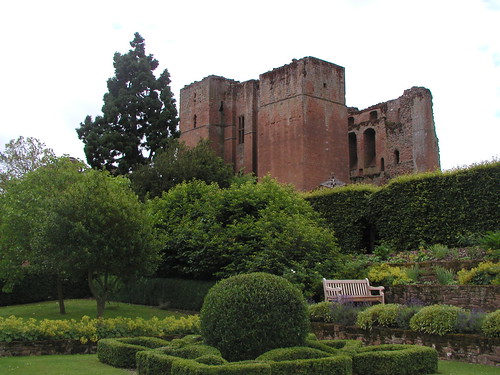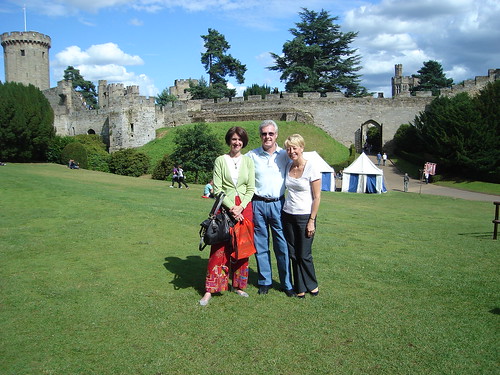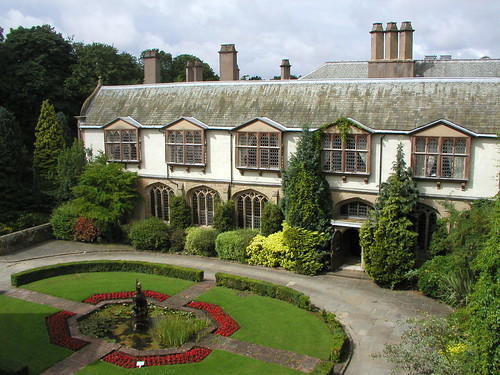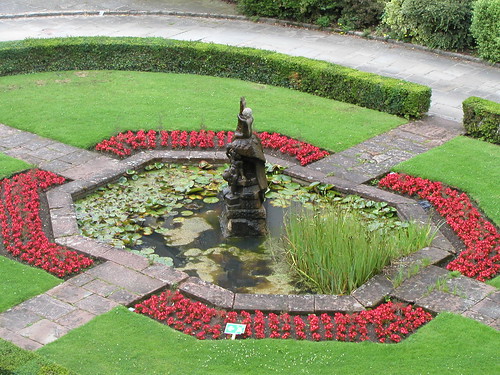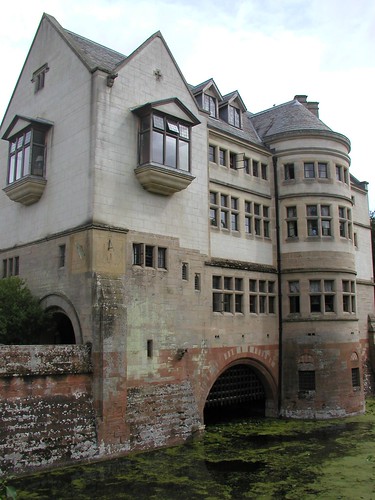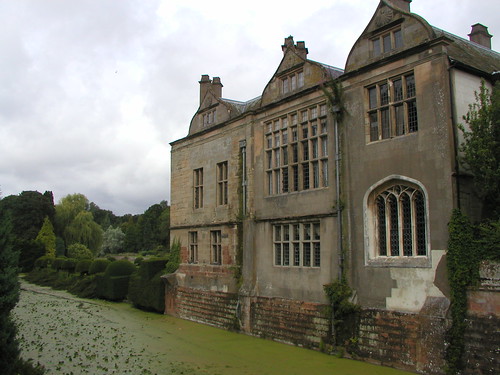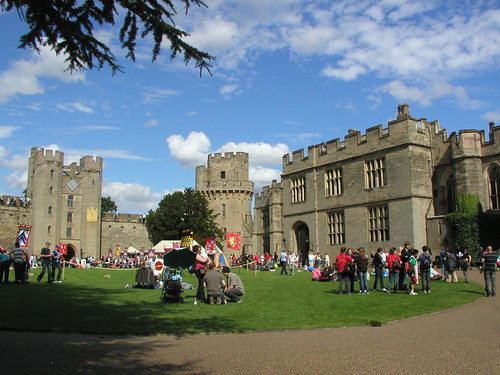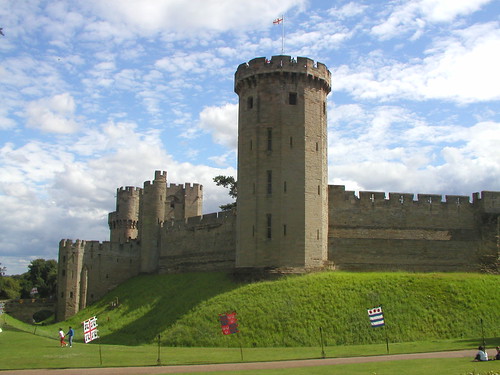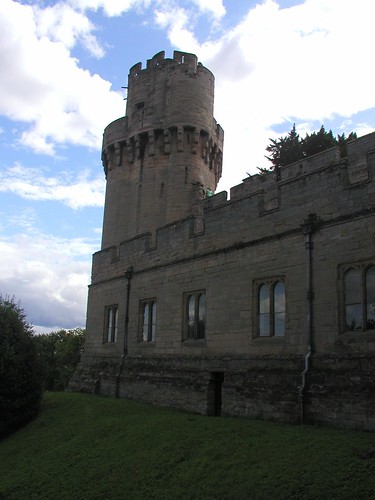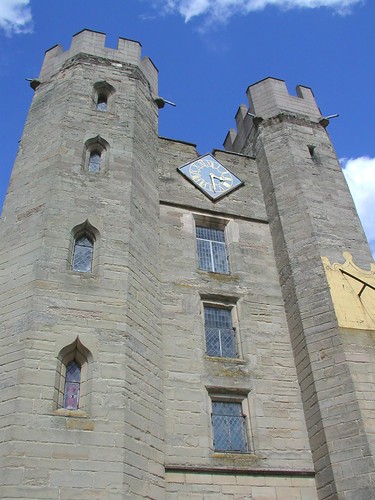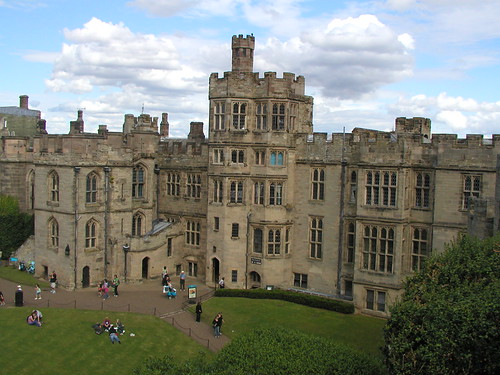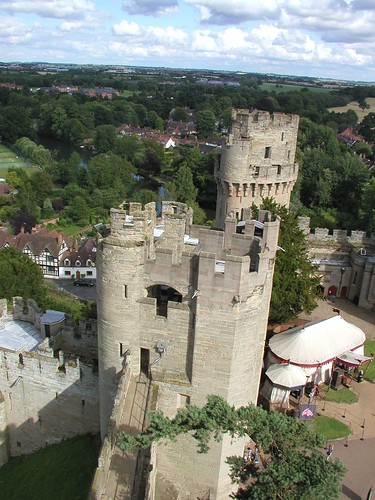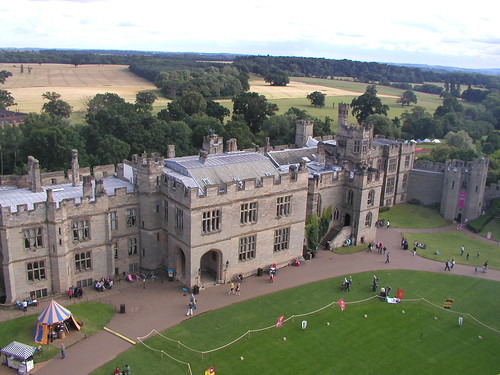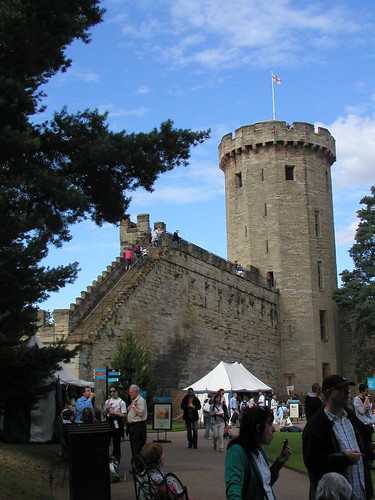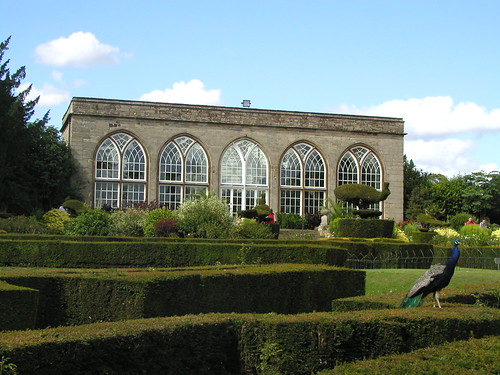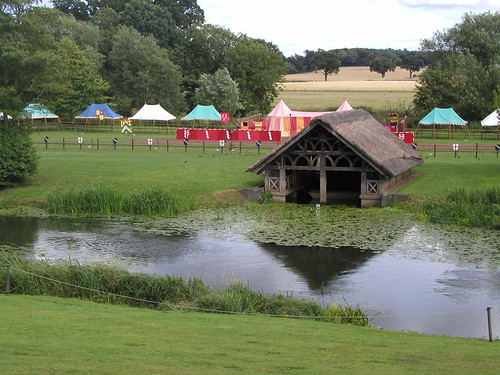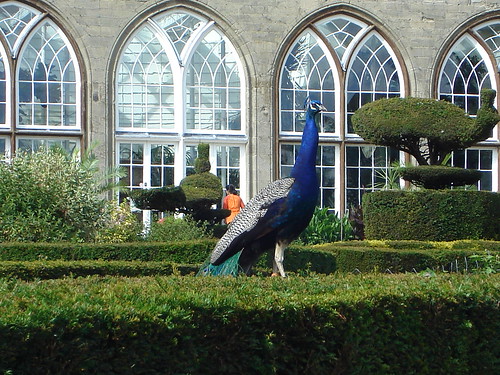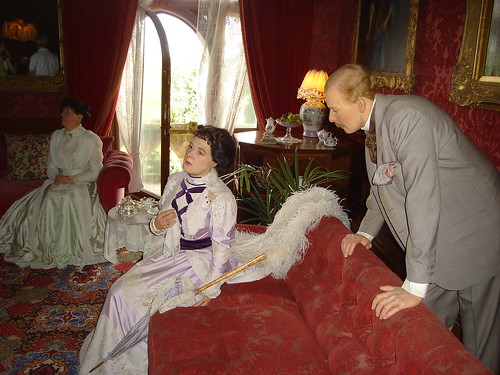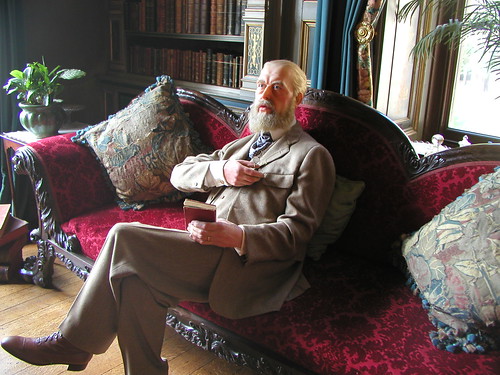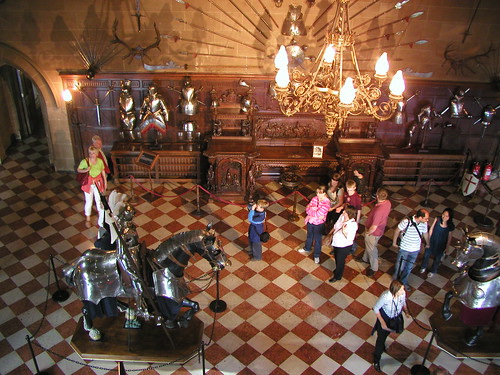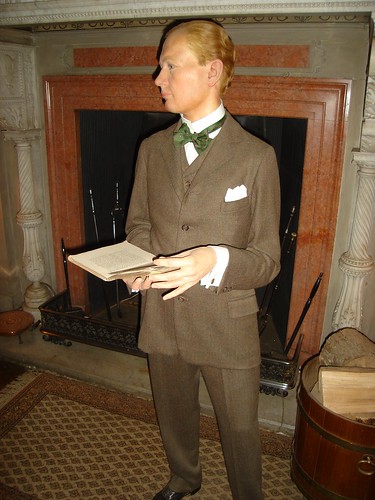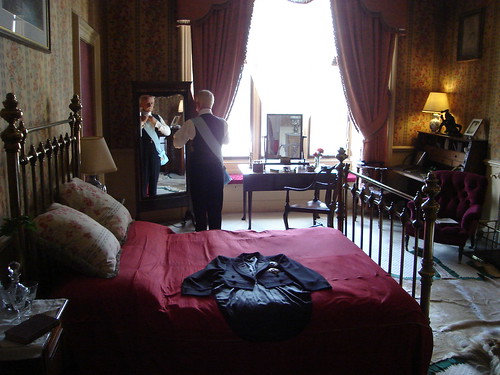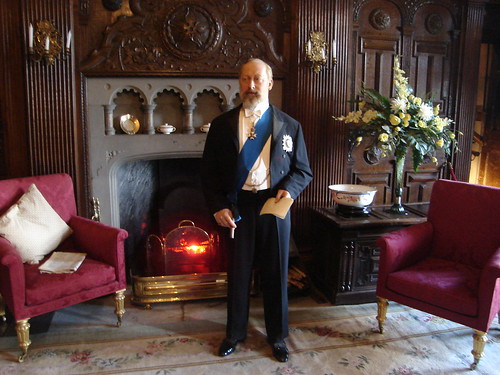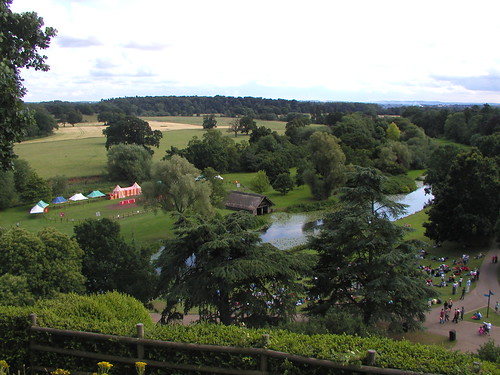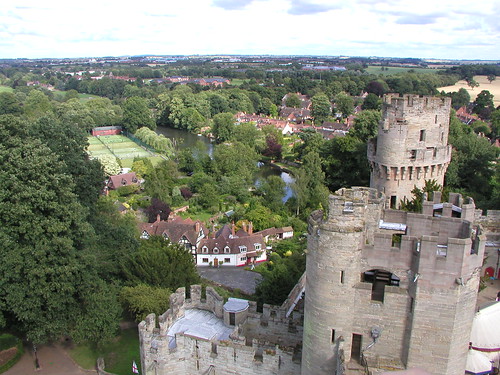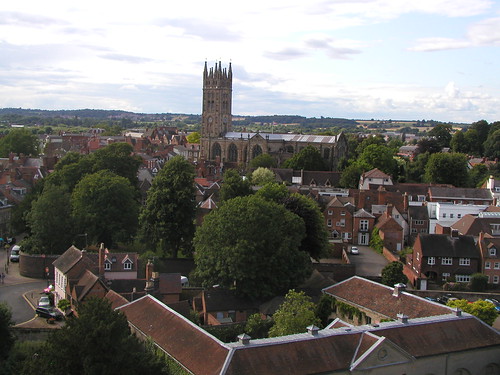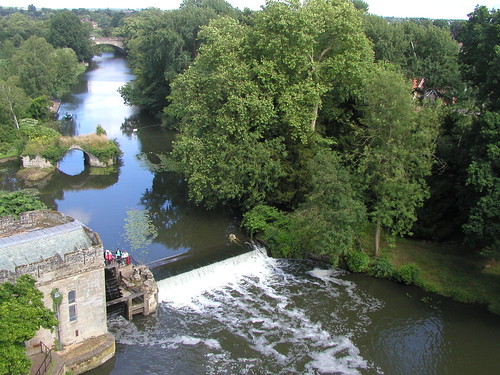On our return to London from our Coventry weekend, the Budman and I stopped by the ruins of Kenilworth Castle to see the grounds, the stonekeeper's house which is still intact, and the newly restored Elizabethan Gardens.

Kenilworth Castle, located in Kenilworth, Warwickshire, was a medieval castle notable for its extensive defenses. Several great battles occurred here, including the great siege by the future King Edward I in 1266. In later years, the medieval castle blossomed under the ownership of Sir John of Gaunt and grew extensively, including the addition of a great hall (that now represents the greatest portion of ruins). Its later history included visits by Elizabeth I when owned by Robert Dudley, as well as a dramatic battles with Cromwell's troops, leaving an open side to the fine Norman keep.
From 1364, Sir John of Gaunt began the castle's conversion from a pure fortress into something more livable, work that continued with his grandson, Henry V. The castle remained in royal hands until it was given to John Dudley in 1553. Following his execution, Elizabeth I gave it to her favourite, Robert Dudley, Earl of Leicester in 1563. Dudley further transformed the castle by making the north entrance the main entrance to suit the tastes of Elizabeth, adding the Leicester building, a large apartment and a residential block overlooking the lake.
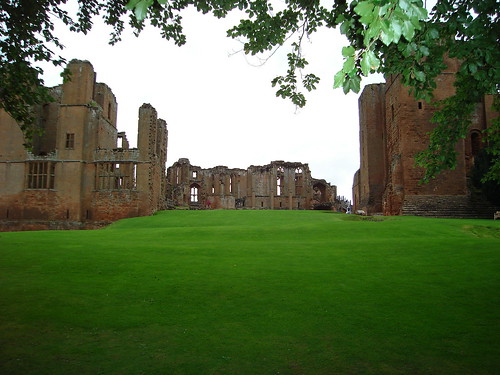
Elizabeth visited Dudley at Kenilworth Castle several times in 1566, 1572, and 1575. The last visit is especially remembered, when Elizabeth brought an entourage of several hundred. No expense was spared for the July visit that lasted 19 days and is reputed to have cost Dudley £1000 per day, an amount that almost bankrupted him. Dudley entertained the Queen with pageants, bear baiting and lavish banquets that surpassed anything ever before seen in England. Of course, Dudley hoped to marry Elizabeth but that never materialized.
First the castle ruins, in particular the Great Hall.

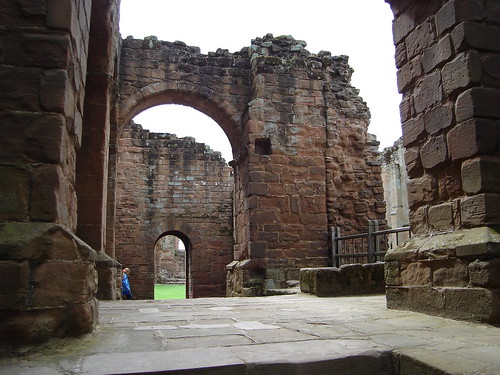




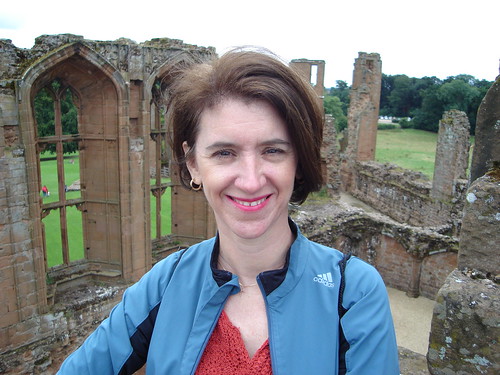
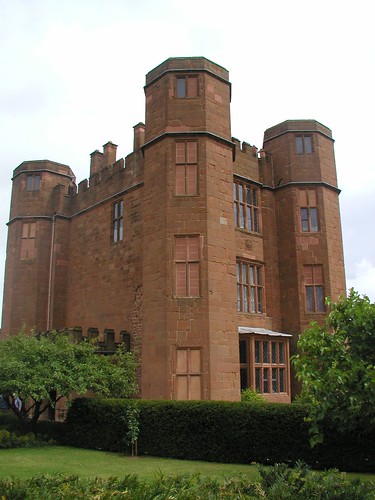



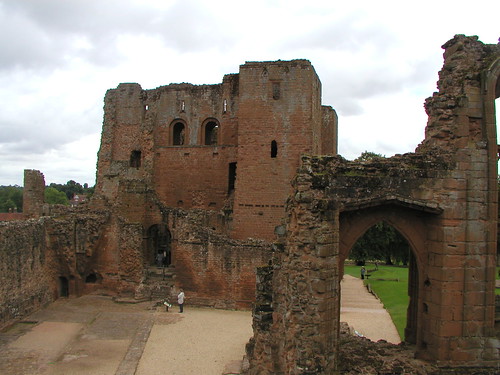
From 2005 to early 2009, English Heritage announced that after archaeological investigations revealed more details of the original Elizabethan Garden, it would restore the garden to more closely resemble its Elizabethan form. In addition to the grounds, a marble fountain and aviary were reconstructed. The project had just been completed and was open for touring on our visit. Both the Budman and I were excited to see this, especially with endless BBC programs on the subject. Interesting but left us both a bit under-whelmed.

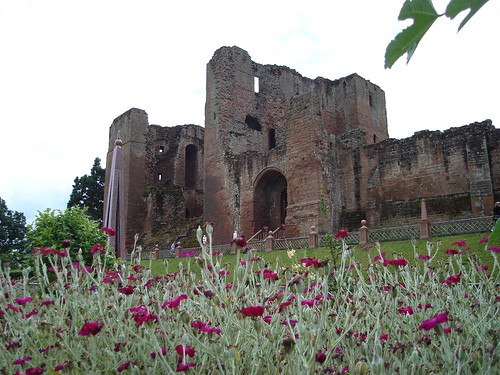
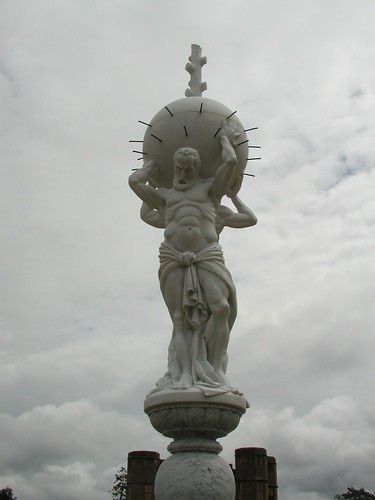
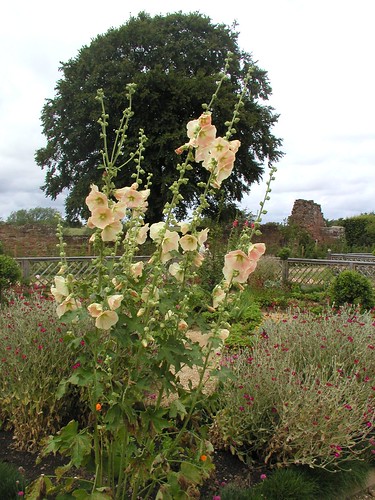
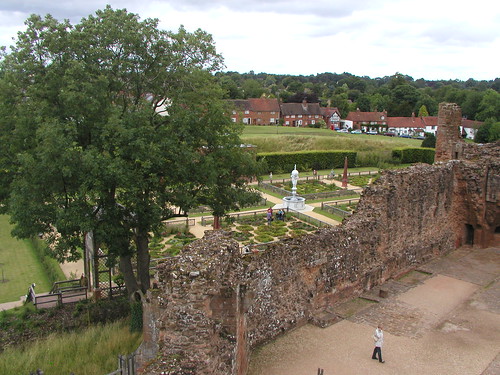
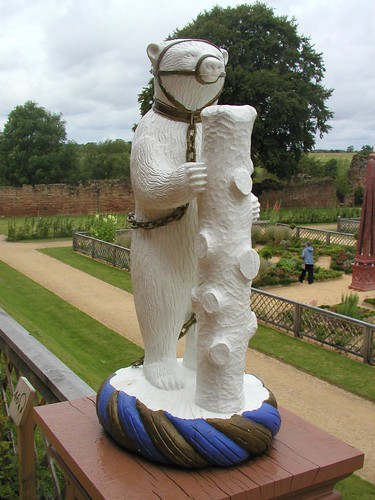
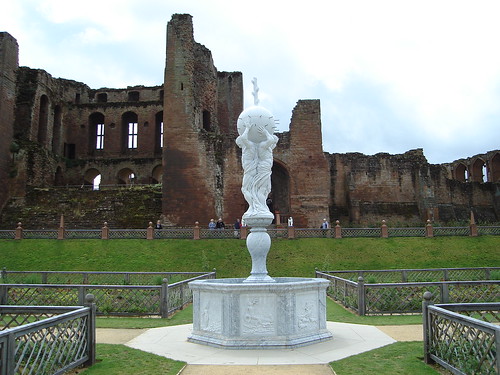
Another view of the Stonekeeper's house; also with a nice little exhibit on Dudley and Elizabeth.
